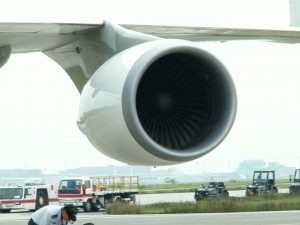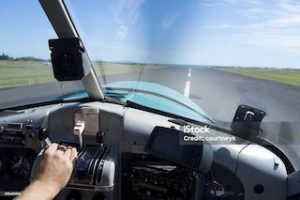Google Advertising About Pilot Training Courses
 In the ever-evolving aviation industry, pilots and aviation professionals are required to stay ahead of technological advancements, regulations, and best practices. For those looking to begin their journey in aviation or enhance their existing qualifications, pilot training courses have become an essential aspect of career development. With the rise of digital marketing, Google advertising has emerged as a powerful tool for training organisations to reach prospective students. But how do pilots and aspiring pilots respond to Google advertising about pilot training courses, and what factors influence their decision to click on ads, enrol in programs, and invest in their aviation education?
In the ever-evolving aviation industry, pilots and aviation professionals are required to stay ahead of technological advancements, regulations, and best practices. For those looking to begin their journey in aviation or enhance their existing qualifications, pilot training courses have become an essential aspect of career development. With the rise of digital marketing, Google advertising has emerged as a powerful tool for training organisations to reach prospective students. But how do pilots and aspiring pilots respond to Google advertising about pilot training courses, and what factors influence their decision to click on ads, enrol in programs, and invest in their aviation education?
This article explores the dynamic relationship between pilots, aspiring pilots, and Google advertising in the context of pilot training courses. We will dive into how digital advertising has reshaped the aviation training landscape, the key elements that make an ad successful, and the ways pilots and aviation enthusiasts react to these ads. From understanding the specific needs and motivations of pilots to examining the effectiveness of targeted ads, this article provides a comprehensive analysis of how Google advertising is playing a pivotal role in shaping the future of pilot education.
Shift to digital advertising in pilot training
The aviation industry has long been recognized for its reliance on traditional methods of training. From flight schools to commercial airlines, pilot education has been largely in-person, with hands-on flying experience being a cornerstone of the learning process. However, as digital technology has advanced, pilot training programs have increasingly integrated online learning tools, simulators, and virtual classrooms to complement in-person flight time.
The internet has also transformed how pilot training courses are marketed. Previously, aspiring pilots learned about available programs through word-of-mouth, local aviation networks, or print advertisements. Today, Google advertising has become a central component of how flight schools and training organisations reach their target audience.
Google Ads, which allow businesses to place targeted advertisements across Google Search, YouTube, Gmail, and partner websites, has revolutionized how pilot training programs are marketed. By strategically targeting ads based on users’ interests, search history, and geographic location, flight schools can connect with prospective students at the exact moment they are actively searching for information about pilot training courses.
Role of Google advertising in connecting pilots with training programs
When a prospective pilot searches for terms like pilot training near me or best flight school for commercial pilots, the results that appear are not only organic listings but also paid ads placed by aviation schools and flight training centres. Google advertising enables flight schools to target individuals at various stages of their aviation career, whether they are aspiring pilots, private pilots looking to upgrade to commercial certifications, or seasoned pilots seeking recurrent training.
The primary appeal of Google advertising lies in its ability to precisely target ads to individuals who have shown interest in flight training. By utilising Google’s advanced algorithms and targeting capabilities, aviation companies can ensure their ads are shown to the right audience or individuals who are already searching for pilot training options or related topics. This makes Google Ads one of the most effective tools for flight schools to reach a qualified, interested audience.
Psychological factors behind a pilot’s response to Google advertising
Understanding how pilots or aspiring pilots respond to Google advertising is key to analysing the effectiveness of these digital campaigns. While each individual may have different needs, motivations, and goals, there are several common psychological and practical factors that drive responses to digital ads for pilot training courses.
1) Immediate need for training
The primary factor that influence a pilot’s response to Google advertising is the immediate need for training. Pilots often search for training programs when they have a clear need. Google advertising allows aviation schools to target these individuals when they are in a decision-making state, actively seeking options to improve their qualifications or start their aviation careers.
For example, if a private pilot is looking to pursue a commercial pilot’s license or an airline transport pilot certification, they may search for courses that will help them meet the necessary requirements. At this point, they may be exposed to Google ads from flight schools that offer these specific courses. The clarity of the ad message, coupled with the timing of the search, makes the ad more likely to lead to a click and, eventually, an enrolment.
2) Trust and credibility
Pilots are highly trained professionals who understand the importance of credibility in the aviation industry. When considering pilot training courses, they will often prioritize institutions with established reputations, certified instructors, and a history of successful student outcomes. In response to Google advertising, a pilot or aspiring pilot is more likely to engage with ads from well-known and trusted flight schools, especially those that have positive reviews, testimonials, or industry accreditations.
The inclusion of trusted certifications, such as approval from aviation regulatory bodies, in Google ads is a powerful way to build credibility and trust with potential students. Ads that feature verifiable credentials and a clear reputation for quality training will generally be more successful in attracting pilot candidates. For pilots or aviation enthusiasts who are already familiar with certain flight schools, seeing these names appear in a targeted Google ad will prompt a response, especially if the ad offers additional incentives like discounts or flexible training schedules.
3) Cost considerations and value proposition
Cost is a significant factor when pilots or aspiring pilots evaluate training courses. While flying lessons and certifications can be expensive, many pilots are willing to invest in their education if they believe they will gain value in terms of career advancement or personal fulfilment. Google advertising that emphasises affordability, financing options, and potential career benefits can resonate strongly with this audience.
Pilots and students will also be drawn to ads that outline the long-term value of training, such as career opportunities in the aviation industry. Advertising that highlights partnerships with airlines, potential job placements, or alumni success stories will increase engagement from pilots who are looking for programs that can deliver tangible benefits beyond just the training itself.
Effectiveness of Google ads for pilot training courses
The effectiveness of Google advertising for promoting pilot training courses lies in several key advantages of digital marketing. Unlike traditional forms of advertising, Google Ads offer precise targeting, measurable results, and a direct path to conversion. Flight schools that use Google’s advanced advertising tools can create highly tailored campaigns that focus on the specific needs and behaviours of prospective students.
1) Targeted reach
The most powerful feature of Google advertising is the ability to reach individuals who have already expressed an interest in pilot training. For example, if a user searches for “pilot training scholarships” or “private pilot license courses,” Google Ads can deliver ads related to those specific queries. This level of targeted advertising ensures that flight schools are marketing their programs to individuals who are already in the market for training, significantly increasing the likelihood of conversion.
Targeting can also be refined by geographic location, making it possible for flight schools to advertise their courses to individuals in specific regions, such as cities with major airports or in areas with a strong aviation presence. By focusing on highly relevant keywords and search terms, **Google advertising** allows flight schools to reach potential students when they are most likely to enrol.
2) Real-time feedback and adjustments
Another advantage of Google advertising is the ability to track real-time metrics and performance. Flight schools can analyse the effectiveness of their ads by monitoring click-through rates, conversion rates, and return on investment. This real-time feedback allows for continuous optimization of ad campaigns, such as adjusting keywords, targeting criteria, or ad copy to improve results.
For example, if an ad promoting commercial pilot training is underperforming, the flight school can immediately adjust the ad copy or refine the audience targeting to improve its reach. This flexibility ensures that **Google advertising** campaigns are always aligned with the evolving preferences of prospective pilots.
3) Cost-effectiveness
For flight schools with limited advertising budgets, Google advertising offers a cost-effective alternative to traditional forms of marketing, such as print ads or billboards. Google Ads operates on a pay-per-click model, meaning flight schools only pay when someone clicks on their ad. This ensures that the marketing budget is being spent efficiently, reaching only the individuals who have demonstrated an active interest in pilot training.
This pay-per-click model allows flight schools to allocate their resources toward the most promising leads, helping them achieve a higher ROI compared to other forms of advertising. Additionally, because **Google ads** can be highly targeted, schools avoid wasting resources on irrelevant audiences.
Future of Google advertising in pilot training
As the aviation industry continues to grow, the demand for qualified pilots is expected to increase, further driving the need for effective pilot training programs. Google advertising will continue to play a significant role in helping flight schools connect with prospective students, especially as more individuals turn to the internet to search for aviation education options. With the rise of mobile internet usage and the growing number of people using Google Search on smartphones and tablets, the opportunities for targeted Google ads to drive enrolments in pilot training courses will only expand.
To stay competitive, flight schools must remain agile in their marketing strategies, continuously adapting their advertising efforts to meet the needs of a diverse and increasingly tech-savvy audience. As the landscape of aviation education shifts towards more digital tools and platforms, Google advertising will continue to serve as a powerful bridge between aspiring pilots and the training institutions that can help them achieve their goals.
Wrapping up
The aviation industry is experiencing a significant digital transformation, and Google advertising has become a crucial tool for promoting pilot training courses. By targeting individuals at the moment they are actively searching for aviation education, Google Ads provide flight schools with a direct and effective way to reach qualified leads. Pilots and aspiring pilots respond to these ads based on a combination of psychological and practical factors, including immediate need, trust in the institution, and cost considerations.
As the digital landscape continues to evolve, Google advertising will remain an essential part of the pilot training ecosystem, helping aspiring aviators take the next step in their careers and ensuring that the aviation industry continues to thrive with a steady pipeline of trained pilots.










